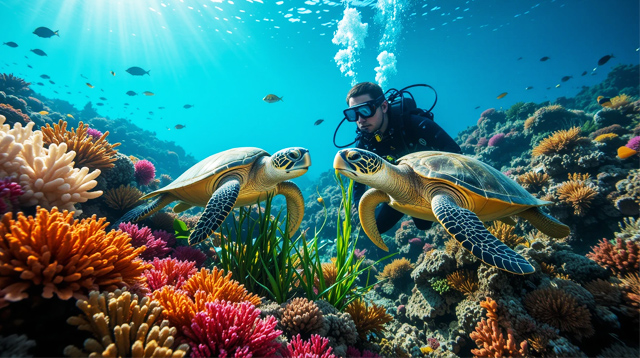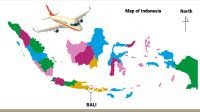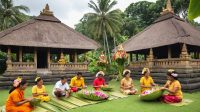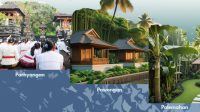TURTLES or penyu in Balinese language are not just marine creatures; they also hold profound significance in Balinese spiritual life and culture. For centuries, turtles have been an integral part of mythological narratives, sacred architecture, and local traditions. The relationship between Balinese people and turtles is a unique blend of reverence for nature and spiritual belief.
Mythological Creatures and Cosmic Symbols
In Hindu mythology, turtles play a central role as Kurma, the second incarnation of the Lord Vishnu. The most famous story is the Kṣirasāgaramanthana (The Churning of the Ocean of Milk). In this epic, the gods and asuras work together to churn the ocean to obtain amrita, the water of eternal life.
To support Mount Mandara, which is used as a churning stick, the Lord Vishnu transforms into a giant turtle. This story teaches that turtles are the foundation of cosmic order, a symbol of stability, and the sustaining force of the universe.
The influence of this story is particularly strong in Bali, where turtles are considered a cosmic symbol that sustains the world. This belief explains why turtles are often carved into the bases of sacred buildings.
Adoption in Padmasana Architecture
The belief in the turtle as the supporter of the world is evident in the architecture of temples (Balinese Hindu places of worship). Many temples in Bali, especially those built on high ground or cliffs, have architecture that replicates this cosmic concept. One of the most iconic examples is the Padmasana, the empty throne of Sang Hyang Widhi Wasa or Almighty God.
The base of the Padmasana is often carved with carvings of turtles and dragons (the Anantaboga and Basuki dragons). The turtle here serves as the cosmic foundation supporting the sacred throne, while the dragons symbolize the richness of the earth and the power of the underground. This combination represents the balance between the upper, middle, and lower worlds, with the turtle as the axis that maintains spiritual and physical stability.
Sacredness and Protection
Beyond mythology, turtles in Bali are also considered sacred animals due to their unique life cycle. Female turtles return to the beach where they hatched to lay their eggs, a miraculous journey that symbolizes a return to their origins. In some temples, pet turtles are even treated as sacred animals, believed to bring blessings.
However, this sacredness does not always guarantee protection. Despite strong beliefs, poaching of turtles for their meat and shells has been a serious problem in the past. Turtle meat, especially from green turtles, is considered a delicacy and is often served at traditional ceremonies. Turtle shells are also used to make handicrafts.
Recognizing this threat, the Indonesian government enacted Law No. 5/1990 concerning the Conservation of Living Natural Resources and Their Ecosystems. This law protects all turtle species in Indonesia and prohibits their capture, hunting, trade, and keeping. Despite the regulation, illegal capture still occurs, highlighting challenges in law enforcement and public awareness.
The Bali Provincial Government also issued a Gubernatorial Regulation No.22/1990 on this matter, entitled: “Regulation of Hunting and Protection of Wildlife and Regulation of Turtle Utilization,” specifically Article 2, which states: (1) The use of turtle meat from species not protected by law by the public is only permitted for customary and religious purposes; (2) Prohibit hotels, restaurants, eateries and food stalls from serving dishes made from turtles; (3) Prohibit the sale of souvenirs made from turtles; (4) The transportation, storage, and slaughtering of turtles for customary and religious purposes must meet health and technical requirements, ensure proper slaughtering, and be in a suitable location, and must not be used as a spectacle for either foreign or domestic tourists; (5) Limit the number of turtles entering Bali to a maximum of the number needed for customary and religious purposes.
Tourist Attractions and Conservation Efforts
Currently, turtles are an important tourist attraction in Bali. Tourists from around the world come to see turtles in their natural habitat or participate in hatchling release programs. Turtle conservation centers, such as the one on Serangan Island, have become educational destinations where visitors can learn about turtle species, the threats they face, and protection efforts.
Turtle conservation centers, which also serve as tourist attractions, can also be found in other locations, such as Deluang Sari (Tanjung Benoa), Kurma Asih Perancak (Jembrana), and in Buleleng (North Bali).
These conservation centers play a vital role in raising awareness and providing a sanctuary for sick or injured turtles. While sometimes criticized for being unnatural, the release of hatchlings has become a popular tool for public engagement in conservation.
With a blend of mythology, culture, and conservation efforts, Bali’s turtles reflect the fragile balance between humans and nature. They serve not only as symbols of a rich past but also as a reminder of the responsibility to preserve biodiversity. Protecting turtles is not only about the survival of the species itself, but also about preserving Bali’s invaluable cultural and spiritual heritage. (*)










